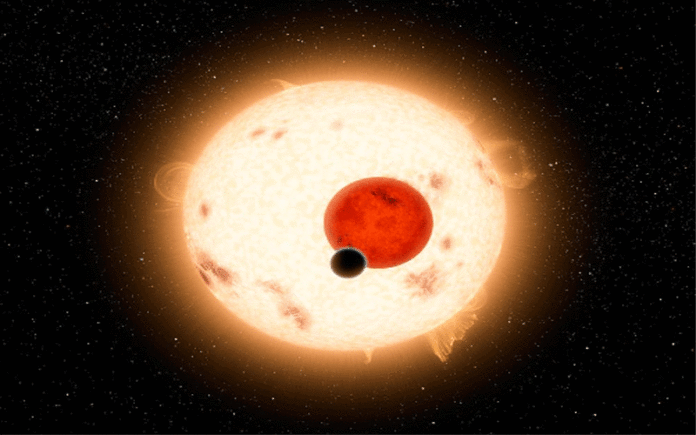A multinational team of scientists have found a new planet covered with deep oceans and two suns. Astronomers on an expedition of planets outside our solar system have discovered an exoplanet in the Draco constellation. This 70 percent larger than earth, named TOI-1452b is nearly 100 light years away from us.
These are some of the questions that guide astronomers looking for planets outside our solar system, and this time they might have hit upon a jackpot. A planet that could have a very deep ocean has been discovered. What’s even more interesting is that it is an Earth-like planet.
Nearly 100 light years away from us, TOI-1452 b is orbiting two stars, unlike Earth, which goes around just one sun. The planet is 70 per cent larger than Earth, and roughly five times as massive, and astronomers have claimed that its density could be consistent with having a deep ocean.
An international team of researchers led by the University of Montreal announced the discovery of Super-Earth, which simulations show to have an ocean world making up as much as 30 per cent of the total mass of the planet. By comparison, Earth’s 70 per cent water regions make up just 1 per cent of the total mass.
“That proportion is comparable to watery moons in our solar system Jupiter’s Ganymede and Callisto, or Saturn’s Titan and Enceladus believed to hide deep oceans under shells of ice,” Nasa said in a statement. The planet goes around its star in just 11 days, meaning a year here is just 11 days long.
Nasa added that observations indicate that because the red-dwarf star is smaller and cooler than our Sun, the planet receives a similar amount of light from its star as Venus does from our Sun, making it a case for liquid water to exist. Meanwhile, the other star in the orbit is so far it takes about 1,400 years to complete one circle.
But to prove the existence of water beyond doubt, they need to conduct more observations. They speculate that the planet might be a huge rock, with little or no atmosphere. It could even be a rocky planet with an atmosphere of hydrogen and helium. The planet was found during observations by the Transiting Exoplanet Survey Satellite (TESS) and ground-based telescopes.
Astronomers are hopeful that they will study the planet in detail with the James Webb Space Telescope, as TOI-1452 b is just 100 light-years from us, which in astronomical terms is fairly close.
“It’s relatively bright star should allow Webb to capture a spectrum of starlight shining through its atmosphere, a kind of fingerprint of atmospheric components. It also appears in a part of the sky, in the constellation Draco, that Webb can observe almost any time of year,” Nasa said.


















































